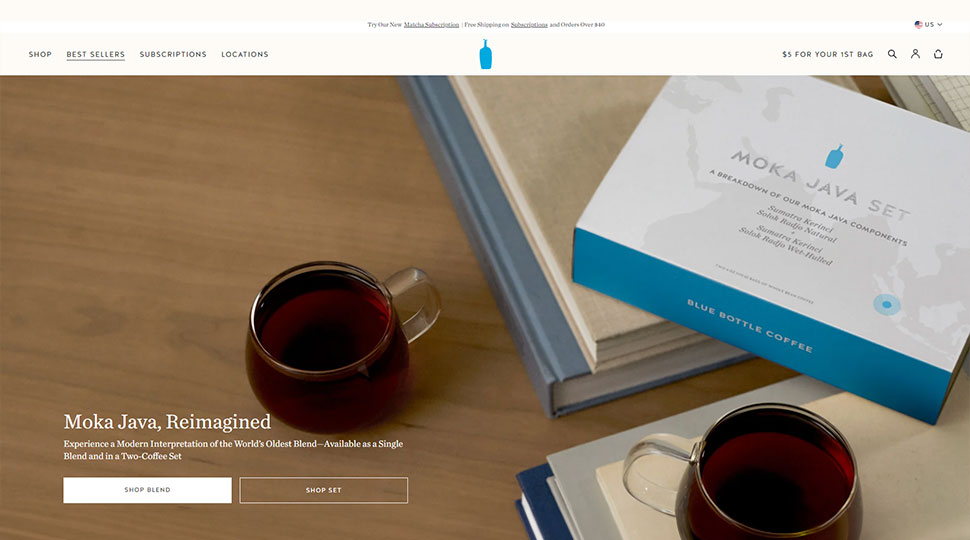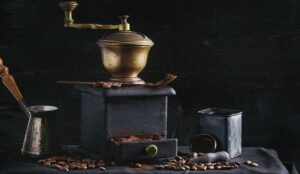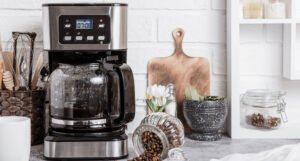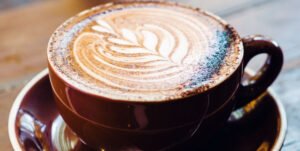Welcome to the esteemed world of gourmet coffee – a realm where the ritual of brewing coffee becomes an art form. Gourmet coffee is no mere caffeine conduit; it’s an exquisite story in every sip, a narrative steeped in rich flavors, unique origins, and meticulous preparation. The quest for the perfect cup is both a passion and a pleasure, a testament to the diversity and complexity that these premium beans encapsulate.
By embracing the gourmet approach, we honor the journey from distant hillside plantations to our very own kitchens. Each choice in this process, from bean selection to the brew, is an opportunity to refine our palate and indulge in a multisensory experience.
Brewing the perfect cup is about more than just quenching thirst; it’s a chance to pause and appreciate the craft, to savor moments of tranquility in our bustling lives. With each brew, we connect with a global community that shares in the ritual and revels in the joy of coffee at its finest.

Choosing Your Beans
A symphony of flavors awaits those who select the finest beans for their gourmet coffee experience. The two primary types of coffee beans are Arabica and Robusta, each with distinct characteristics that entice the palate in their own right. Arabica beans are renowned for their smooth, complex flavor profiles and lower caffeine content, making them a darling in the specialty coffee world. Robusta, on the other hand, possesses a more robust and bitter profile with a caffeine kick that some coffee lovers swear by.
When you embark on the journey of brewing coffee, it’s paramount to appreciate the variety within these categories. Single-origin Arabica beans from Ethiopia may boast floral notes and a citrusy tang, while those from Colombia typically exhibit a balanced acidity with nutty, caramel undertones. Seek out the famed Blue Mountain beans from Jamaica or the earthy Sumatra Mandheling for an even more unique bouquet.
Understanding the roast is equally crucial. Light roasts are known for their brighter acidity and preserved original flavors, whilst dark roasts offer deeper, bolder tastes with hints of chocolate or even a smoky essence. Medium roasts strike a balance that can please a broad spectrum of coffee aficionados, highlighting the beans’ intrinsic sweetness.
Where to Buy Top-Quality Beans
In pursuit of premium beans to perfect the art of brewing gourmet coffee, one must consider several avenues. Local coffee roasters are excellent sources, where expertise and passion converge. Here, you can often find connoisseurs ready to share their knowledge on the origin, roast, and flavor profiles of their beans. Besides the wealth of information, buying local supports small businesses and often ensures a higher level of bean freshness due to the proximity and turnover of their stock.
Coffee aficionados can also turn to specialized coffee shops or boutiques that pride themselves on offering an array of single-origin and blended beans. These establishments understand that the foundation of a great cup of coffee lies in the quality of the beans they source. They frequently partner with sustainable farms and ethical trade organizations, providing not just superior beans but also peace of mind for the conscious consumer.
Online coffee marketplaces and subscriptions have surged in popularity for those who cherish convenience without compromising on quality. These services can deliver handpicked beans right to your doorstep, often with customizable options based on your taste and preferred brewing method. Many online retailers provide extensive descriptions and brewing suggestions for each product, aiding your journey to find the ideal match for your gourmet coffee palate.
When buying beans, whether in-store or online, look for a roast date on the packaging. Freshness is paramount in coffee, and the closer the date of purchase is to the roast date, the more vibrant and intact the flavors will be. Aim to use beans within a month of their roast date, and refrain from buying in bulk unless you consume coffee quickly; fresh beans are essential for the perfect brew.
Grinding Your Coffee Beans
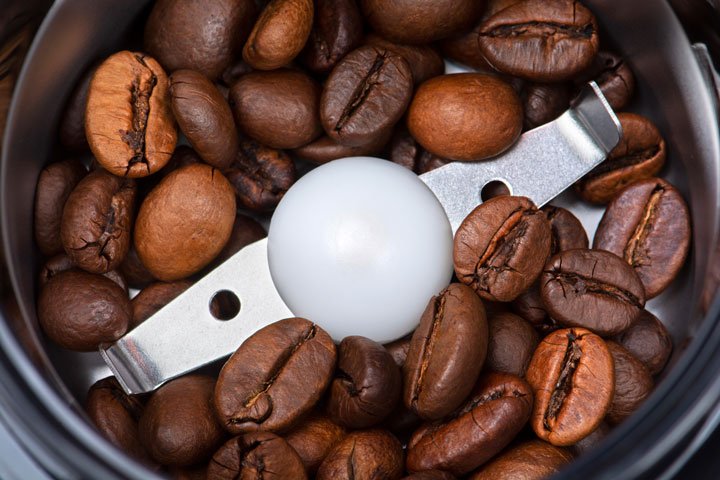
As any connoisseur of gourmet coffee knows, the grind is as pivotal as the bean itself. The correct coarseness or fineness of your coffee grounds is a decisive factor in the brewing process, and investing in a good grinder is the cornerstone for achieving the perfect cup.
Types of Grinders Available for Grinding Coffee Beans
Grinders come in various shapes, sizes, and mechanisms, each with its pros and cons. The two main types are blade grinders and burr grinders.
Blade grinders are typically the more affordable option, using a high-speed blade to chop the beans into grounds. While they are a convenient entry-level choice, they can produce uneven grounds and heat them up, sometimes altering the flavor of your coffee. If you’re on a budget but still wish to enhance your coffee brewing process, a blade grinder is a starting point.
Burr grinders, in contrast, are revered by coffee enthusiasts and recommended for anyone serious about upping their brewing game. These grinders crush the beans between two burrs, one stationary and one rotating, to create uniform coffee grounds. They also tend to offer a range of grind sizes, which can be adjusted to suit various brewing methods.
Within the burr category, there are two types to consider: flat burr and conical burr grinders. Flat burr grinders provide an exceptionally consistent grind but can be pricier and slightly noisier. Conical burr grinders are quieter and less expensive, offering a broad range of grind sizes and often producing less heat, thus protecting the beans’ flavor integrity.
For those who cherish the tactile experience of preparing their gourmet brew, manual grinders are a worthy choice. While requiring more effort, they give you complete control over the grind and are often more portable, making them perfect for those who enjoy brewing coffee even when traveling.
How to Achieve the Desired Grind Size for Different Methods of brewing coffee
Achieving the right grind size is crucial for the extraction of flavors — too coarse, and the coffee may be under-extracted and sour; too fine, and it may be over-extracted and bitter. Understanding the nuances will elevate your brewing coffee routine to a sensory celebration.
For a drip coffee maker, a medium grind akin to sand is often recommended. This grind size allows for the right extraction rate, trapping the water for enough time to extract flavors but not so long that it leads to bitterness.
The French press, loved for its rich and full-bodied brew, calls for a coarser grind the size of breadcrumbs. This avoids the fines slipping through the press filter and leading to an overly robust or sludgy cup.
Pour-over methods, like Chemex or V60, work best with a medium-coarse grind, resembling sea salt. The grind size should allow for a steady flow of water, without pooling atop the grounds, to maintain brightness and balance.
For espresso, a fine grind is crucial to creating that signature golden crema and rich, concentrated flavor. It should feel almost like powdered sugar. The emphasis on precision in espresso-making means an evenly fine grind is non-negotiable to avoid channelling and ensure a uniform extraction.
Cold brew requires a grind on the other end of the spectrum. With its prolonged steeping time, a very coarse grind, one that might resemble cracked peppercorns, is ideal to ensure smoothness and prevent over-extraction.
Finally, an Aeropress can accommodate a wide array of grind sizes depending on the brewer’s preference, but generally, a fine-to-medium grind is a safe start.
Now, it’s important to note that these guidelines are starting points. Brewing coffee is a personal journey, and no rule is set in stone. Experiment with different grind sizes to taste how it affects extraction and discover what hits the mark for you.
The pursuit of brewing the perfect cup of gourmet coffee at home is continually evolving. The grinding process is undeniably a critical step, setting the stage for extraction and, ultimately, your enjoyment. By recognizing the importance of both grinder choice and grind size, your daily coffee ritual becomes a tailored experience, ensuring every cup is as delightful as the last.
Brewing Methods Explained
Exploring the myriad of brewing methods is akin to unlocking a treasure chest of flavor possibilities in gourmet coffee. Each method influences the taste, aroma, and body of the final brew, catering to the diverse preferences of coffee enthusiasts.
Drip Machines
The drip coffee machine is a staple in many households, offering convenience and consistency. This brewing method involves hot water flowing over grounds held in a filter, with gravity guiding the extraction process as the coffee drips into a carafe below. For a more gourmet approach, opt for a machine with customizable settings to control temperature and brew strength. Specialty drip machines with a showerhead design ensure even extraction, coaxing out nuanced flavors and aromas.
French Press
The French press, or cafetière, is beloved for its simplicity and rich brew. It immerses coarse grounds in hot water, allowing the coffee oils and fine particles to remain in the liquid, contributing to a full-bodied and textured cup. To brew, add grounds to the carafe, pour over hot water, stir, place the lid with the plunger pulled up, and let steep for about four minutes. Then, gently press down the plunger, which separates the grounds from the extracted coffee.
Pour Over
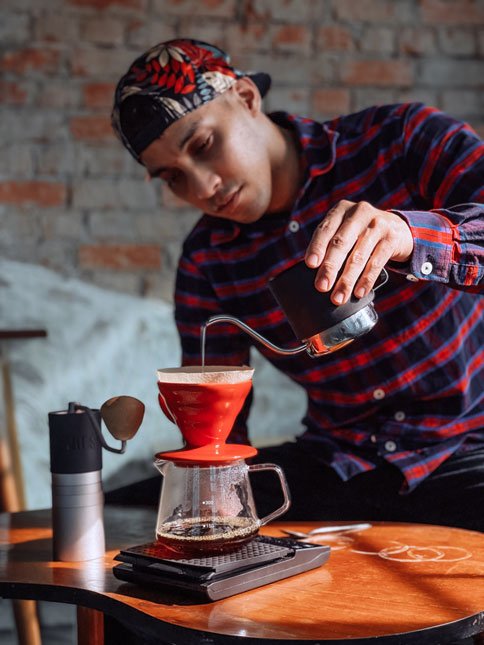
Pour-over coffee necessitates a more hands-on approach, rewarding the brewer with remarkable control over extraction.
It requires pouring hot water over grounds in a filter set within a cone or carafe.
The pour-over method highlights intricate flavor notes and clarity in the brew, making it a favorite for those who appreciate the subtleties of gourmet coffee.
Key factors include the grind size, water temperature, pouring technique, and the rate at which water passes through the grounds.
Espresso Machine
For coffee lovers drawn to a concentrated and robust cup, the espresso machine stands out. Making espresso involves forcing hot water through very finely ground coffee at high pressure, producing a small, powerful shot with a velvety crema on top. Espresso machines range from manual to fully automated, giving enthusiasts the chance to perfect their barista skills or enjoy a consistent shot at the push of a button.
Cold Brew
Cold brew coffee is crafted by steeping coarsely ground beans in cold water for an extended period, usually 12–24 hours. The result is a smooth, mellow coffee with reduced acidity, making it a go-to for those with sensitive stomachs or a preference for a sweeter, more laid-back flavor profile. The cold extraction process draws out different compounds from the beans, offering a unique tasting experience.
Aeropress
The Aeropress is a modern invention quickly gaining popularity for its versatility and rapid brewing capability. It combines immersion and pressure, similar to an espresso, but is more forgiving and portable. The coffee grounds are immersed in hot water then pressed through a filter by plunging, resulting in a cup that accentuates the beans’ brighter notes and offers a smooth texture.
Other Methods
Moka pot, also known as a stovetop espresso maker, brews coffee by passing boiling water pressurized by steam through grounds. It produces a coffee closer to espresso but lacks the same level of pressure and crema. It’s a simple, reliable brewing method that creates a robust and flavorful cup.
The Turkish ibrik, or cezve, is a traditional method that involves simmering finely ground coffee with water and often sugar in a special pot. It yields a strong, unfiltered brew, distinctive with its intense flavors and sediment at the bottom of the cup.
From the high-tech espresso machine to the time-honored Turkish ibrik, each method of brewing coffee holds the potential to unlock the unique character of your gourmet coffee beans. While the process may vary, the goal remains the same: to craft a cup that satisfies your craving for excellence in every sip. Whether you favor the rich, bold taste of an immaculately pressed espresso, the refreshing clarity of cold brew, or the nuanced notes achieved through pour-over, mastering these methods ensures your journey through the world of gourmet coffee is endlessly fulfilling.
The Last Drop
In the pursuit of brewing the quintessential cup of gourmet coffee, the journey is just as delightful as the destination. The intricate dance of selecting beans, achieving the perfect grind, and mastering various brewing techniques culminates in an enriching ritual that elevates each cup into a celebration of flavor and craftsmanship.
As you refine your skills and deepen your understanding, remember that the world of coffee is one of constant discovery and pleasure. For the latest insights into the ever-evolving realm of coffee culture, be sure to subscribe to our website for notifications of new articles, events, and videos designed to fuel your passion and expertise.
Together, let’s continue to explore the rich tapestry of coffee, one exceptional brew at a time.


